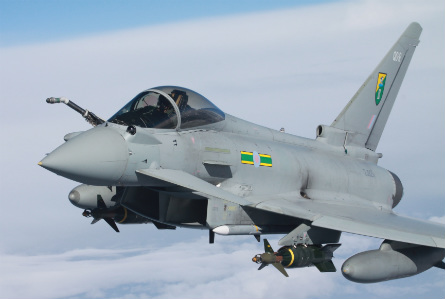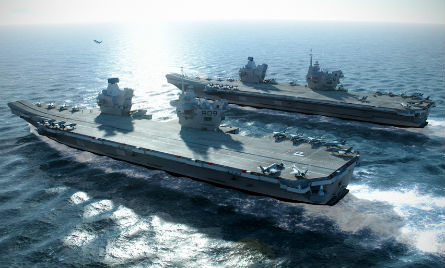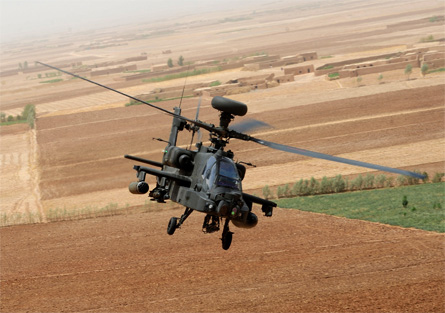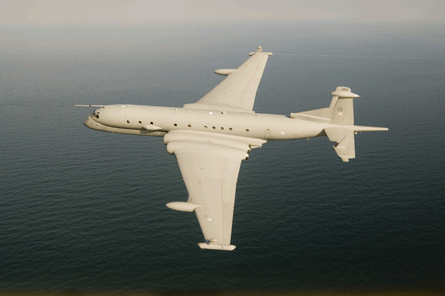The UK will be able to meet its military spending priorities for the next 10 years without having to make additional cuts to its personnel or equipment profiles, defence secretary Philip Hammond has announced.
Marking the completion of a delayed planning round process for 2012, Hammond's 14 May statement confirmed that the Ministry of Defence's long-term funding has been brought into balance, with £152 billion ($245 billion) to be made available over the next decade, plus an unallocated contingency of £8 billion.
"The black hole in the defence budget has finally been eliminated," he says, referring to a previously identified funding shortfall of £38 billion in delivering the UK's Future Force 2020 structure.
 |
|---|
Eurofighter The 10-year spending plan will cover capability enhancements for the RAF's Eurofighter Typhoons |
All major aircraft acquisition programmes remain in place under the allocation, which will include funding undisclosed capability enhancements to the Eurofighter Typhoon and ordering the UK's first series production examples of the short take-off and vertical landing Lockheed Martin F-35B Joint Strike Fighter (JSF).
While conceding that it is difficult to budget exactly on the latter type at this stage in the US-led programme, Hammond says: "We have a pretty shrewd idea of what the JSF is going to cost."
 |
|---|
BAE Systems The UK will operate the F-35B from its Queen Elizabeth-class aircraft carriers |
Also safe are air transport programmes to introduce the Airbus Military A400M, A330 Voyager and an eighth Boeing C-17, as is a deal with L-3 Communications for three RC-135 Airseeker electronic intelligence-gathering aircraft. The UK will also go forward with orders for AgustaWestland's Lynx Wildcat and 14 Boeing CH-47 Chinook HC6 helicopters, along with upgrades to the AgustaWestland Merlin HM1 and Eurocopter Puma HC1 for the Royal Navy and Royal Air Force, respectively. A life-extension programme for the British Army's Westland/Boeing Apache AH1 attack helicopters is also secure.
 |
|---|
Crown Copyright An upgrade programme will extend operations of the Apache AH1 beyond 2025 |
Some £7 billion has been allocated to support precision-guided weapons programmes for the three armed services, while £4 billion has been earmarked for new cyber projects and intelligence, surveillance, target acquisition and reconnaissance equipment.
The latter will include a "Crow's Nest" effort to replace the navy's Westland Sea King 7 airborne surveillance and control system helicopters. The MoD will also assess its options with regard to retaining the Raytheon Systems Sentinel R1 airborne stand-off radar fleet post-2015, or retire the modified business jets as planned and replace their capability using other equipment.
 |
|---|
Crown Copyright A final decision has yet to come on whether to retain the Sentinel R1 |
With painful cuts having already been made as a consequence of the UK coalition government's Strategic Defence and Security Review of September 2010, Hammond says the 10-year planning process has been about, "reluctantly accepting smaller armed forces and redoubling our resolve to invest in the best possible equipment for them".
Ongoing procurement reform should look to learn lessons from the urgent operational requirement model used to rapidly acquire new equipment to support operations in Iraq and Afghanistan, he believes.
Referring to a previous "conspiracy of optimism", where politicians, defence procurement officials and the military would launch programmes against an unrealistic best-case scenario, Hammond says "no project will be allowed to commit without a 10-year budget line to cover not only its procurement, but also its support costs". And he cautions that "individuals and contractors can expect to be held to account for the estimates on which decisions are based".
The UK National Audit Office will perform a review of the new equipment plan and report on its affordability against the available budget, which counts on a 1% real-term increase in defence spending per year from 2015. Hammond says the MoD also has an assurance from the Treasury that any funds released via further efficiency savings will be spent on defence equipment.
This would add to the £8 billion contingency fund, parts of which will be allocated on a yearly basis "to respond to emerging equipment requirements" not yet included within the core defence programme.
One major element lacking from the Future Force 2020 plan is any reintroduction of the RAF's lapsed maritime patrol aircraft capability. "Maritime surveillance from conventional aircraft is not currently funded in the programme," Hammond confirms. "A number of different technologies will be available to deal with it as we approach the end of the decade. That is one of the decisions that the armed forces committee will have to make when it considers the prioritisation for the headroom in the planned equipment budget."
 |
|---|
BAE Systems The UK's balanced budget does not include funds to order a replacement for its cancelled Nimrod MRA4 maritime patrol aircraft |
"Military stability - knowing what we can afford; how many personnel, ships, vehicles and aircraft - is essential to planning for future success," says Gen Sir David Richards, Chief of the Defence Staff. "This balanced budget will give us much greater stability. Through it we have received a commitment of investment over the next decade, giving us much-needed clarity on which to base our plans."
Source: Flight International
















